All the vibrant colors of Castelli ceramics on display at Teramo Art Gallery
An exhibition dedicated to Castelli’s famous ceramics: it is The Fragile Beauty. Castellian Historiate between the Seventeenth and Eighteenth Centuries, held at the Pinacoteca Civica di Teramo from December 18, 2021 to May 1, 2022. The Abruzzo museum, after its reopening in 2018 and the subsequent publication of the relevant guide in 2021, intends to continue the work of enhancing the city’s historical and artistic heritage with this exhibition, the first exhibition initiative set up in the renovated rooms, curated by Giuseppe Matricardi and Stefano Papetti, by presenting to the public a significant nucleus of castellan majolica from the seventeenth and eighteenth centuries that had remained confined to the deposits of the civic museum for long decades.
The exhibition showcases the “fragile beauties,” or majolica tiles, that came out of the ceramic workshops of Castelli, a village in the province of Teramo that has imposed itself on the international scene thanks to the creation of ceramic artifacts characterized by daring experimental solutions and the reworking of images drawn from contemporary painting, such as the pieces on display that stand out, in thesphere of seventeenth- and eighteenth-century Italian production, for the quality of the glazes enlivened by the application of gold, the accuracy of the pictorial rendering and the adherence to the most up-to-date figurative repertoires of the time.
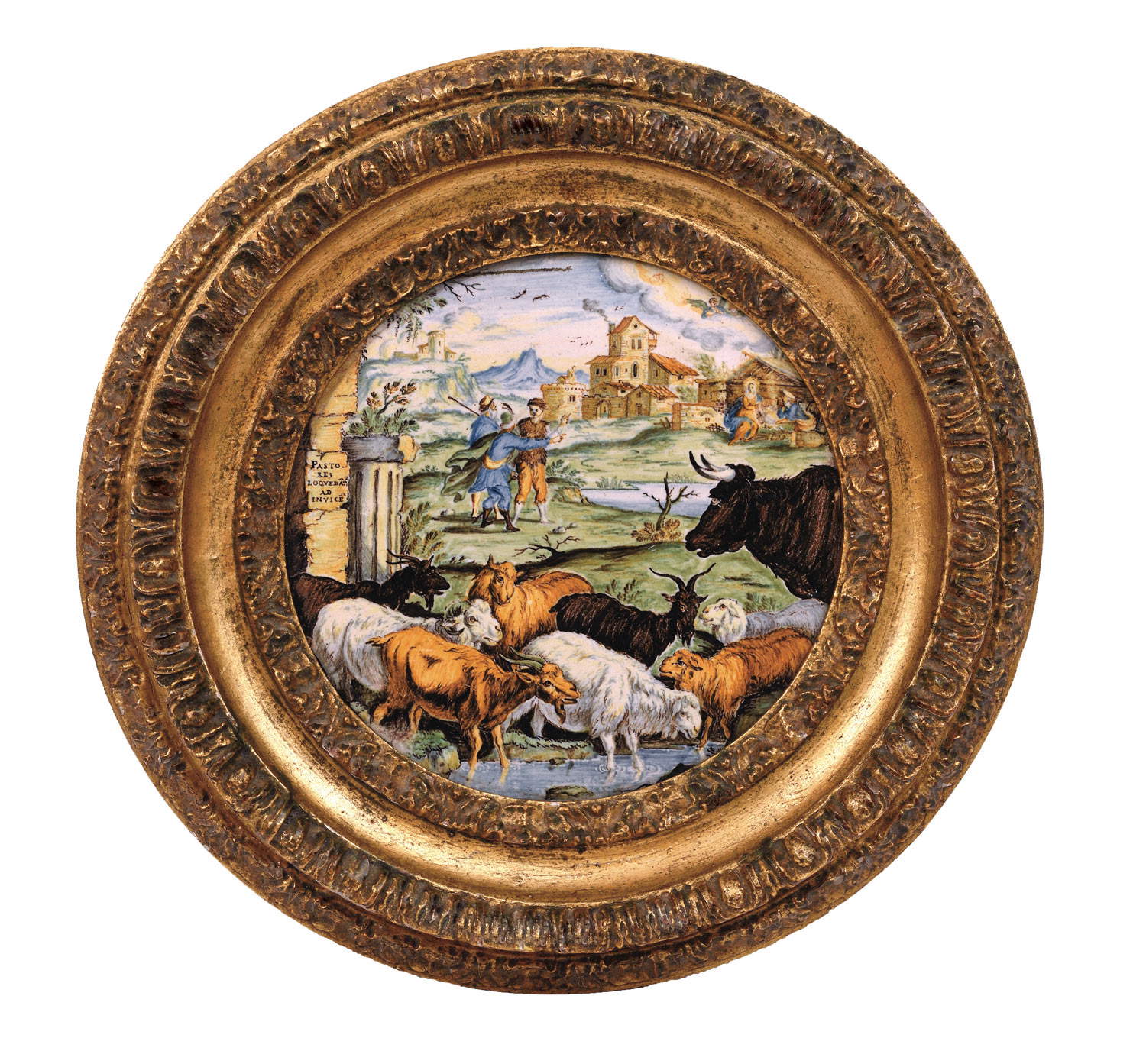
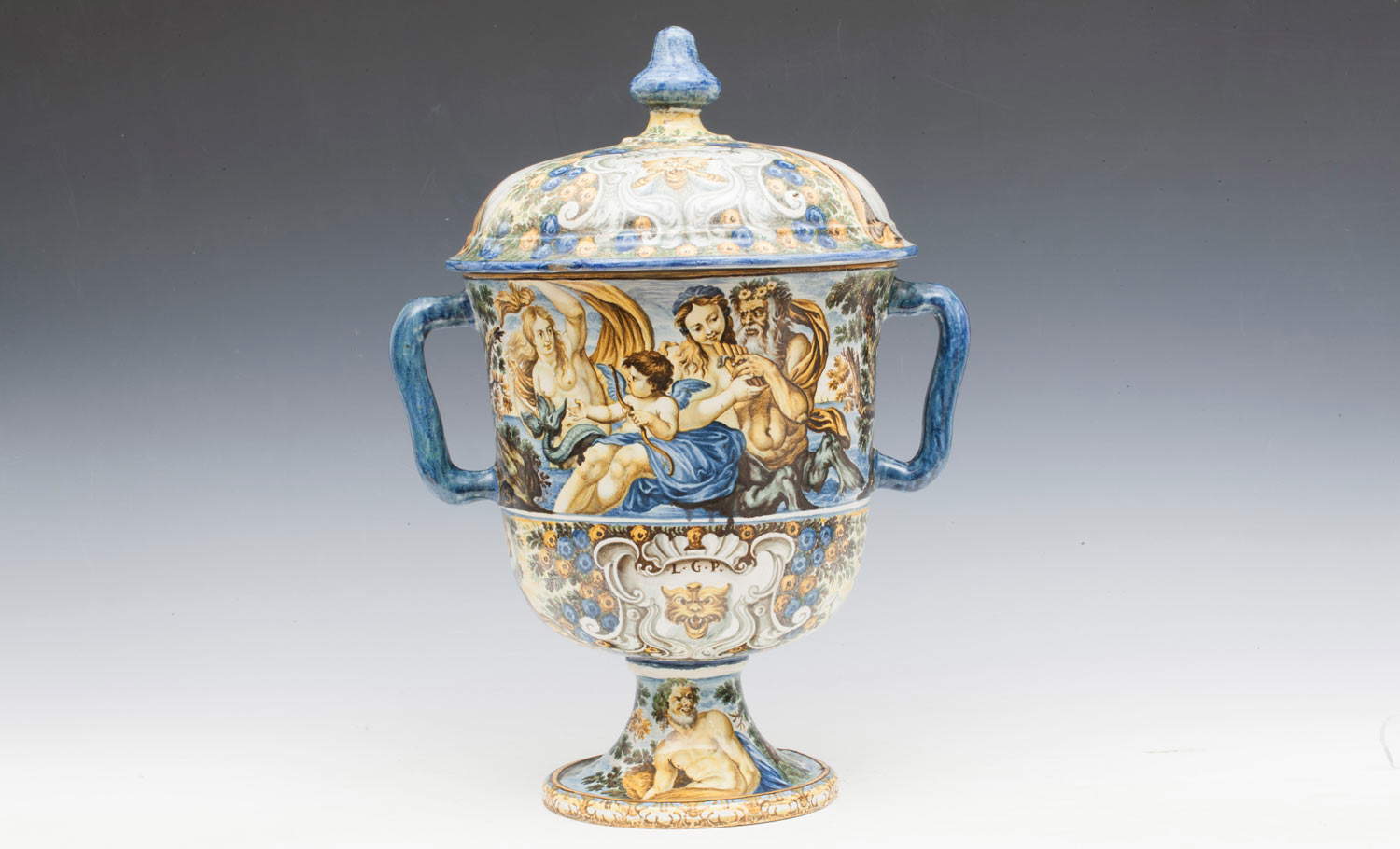
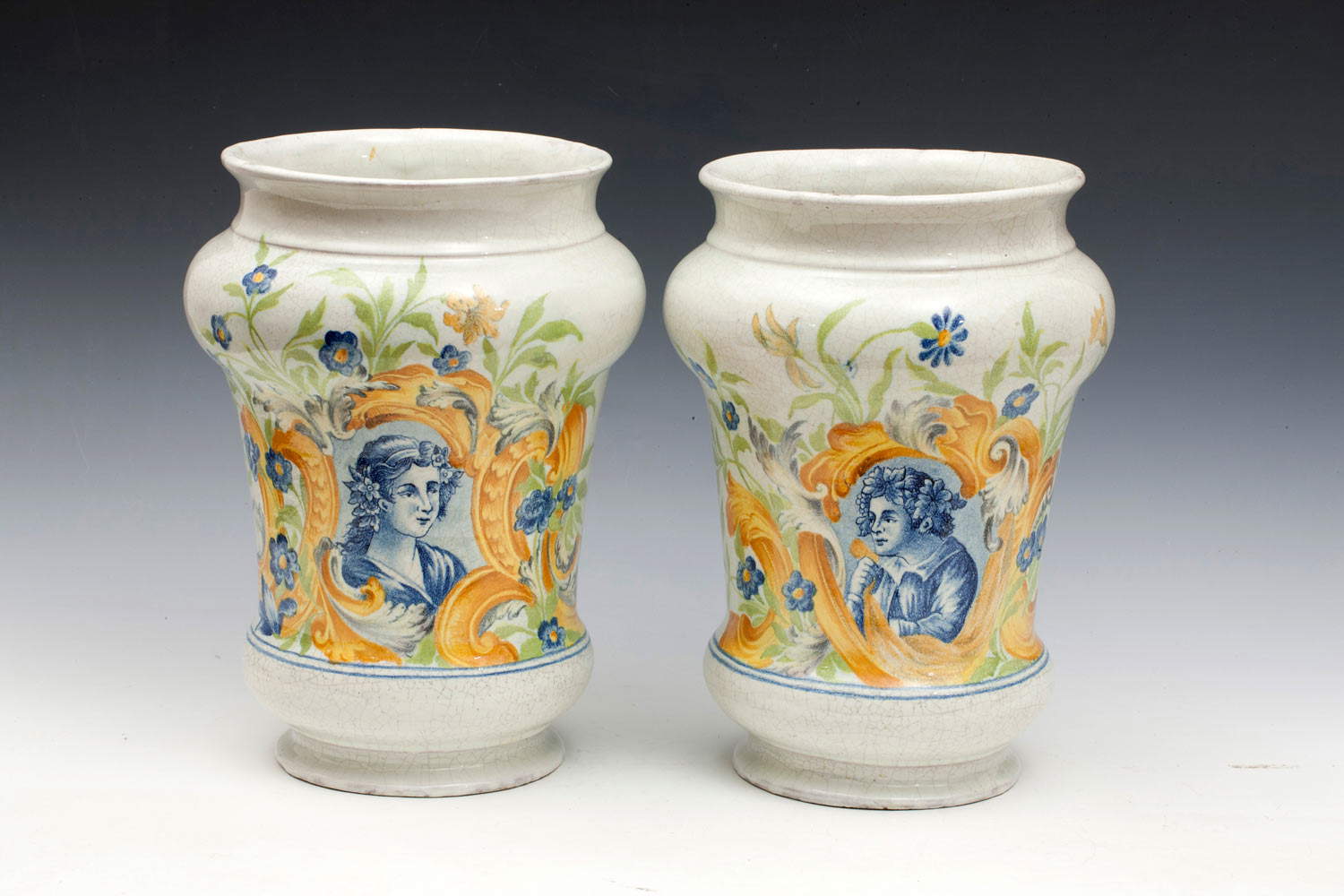
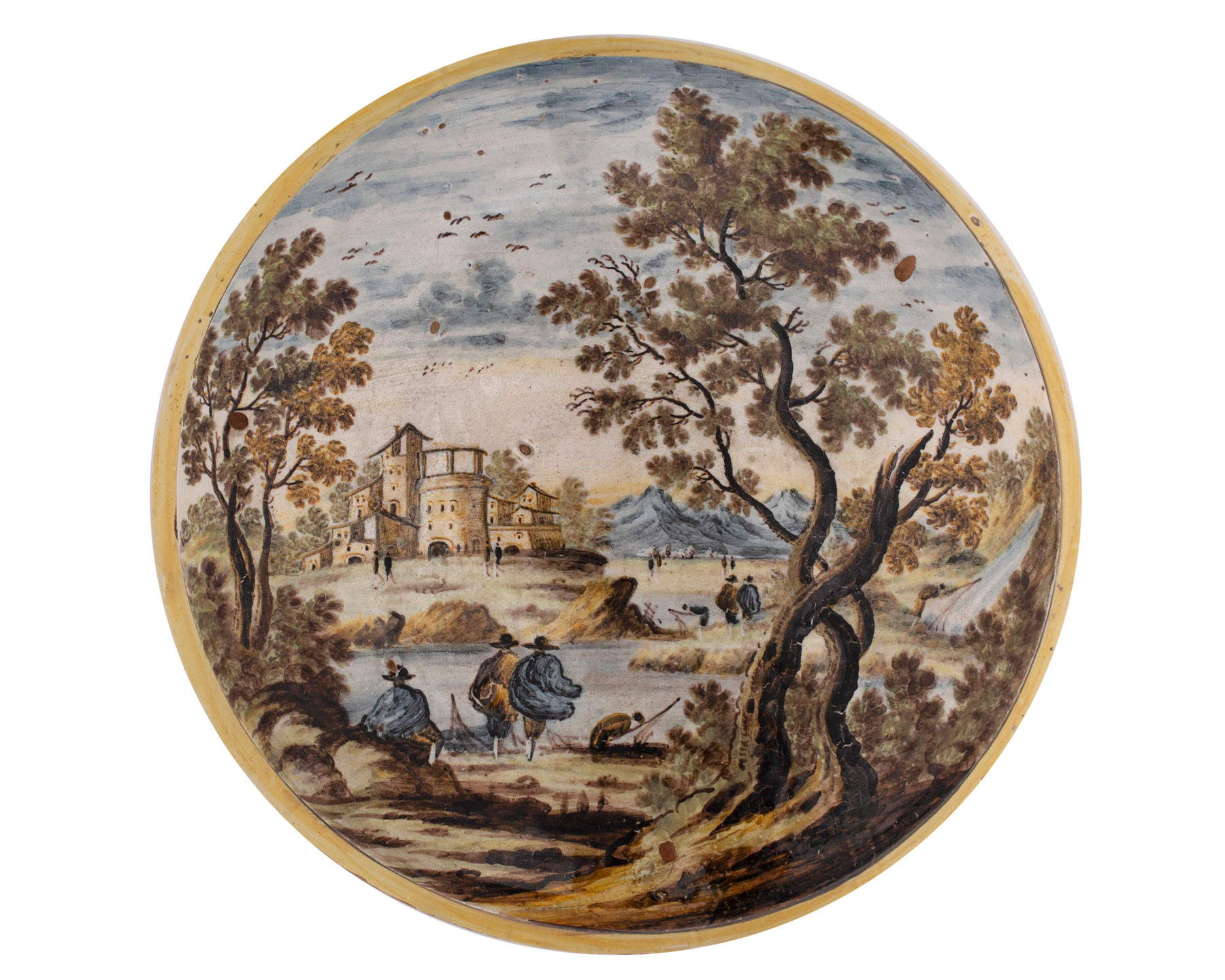
Castelli ceramics
The ceramic tradition in the territory of Castelli apparently was already present in Etruscan times, but in reality it is not possible to establish with certainty the origins of this art. It is known that the earliest modern finds date back to the 15th century, while it was from the second half of the 16th century that Castelli pottery came to prominence and reached its apogee, becoming the most important economic activity in the village (and even today most of the inhabitants of Castelli, which has just over a thousand inhabitants, are employed in the pottery industry): Castelli pottery was widely popular as a quality product, sold at competitive prices, and decorated in very imaginative and lively styles. The development of the art of ceramics is due to the fact that there are numerous clay quarries and several waterways around the village, as well as beech forests that guaranteed wood to fuel the kilns.
There are two main styles: compendiary, used mainly for decorations, particularly with plant motifs, andcastellan historiate, which was used for landscapes or scenes with figures, religious or mythological or even allegorical scenes, triumphs, and images of wars. The main characteristic of castellan historiato is the great vividness of the colors that have made it a particularly popular product since ancient times. Between the 16th and 18th centuries there were a number of important family workshops active (those of the Grue, Gentili and Pompei families in particular), which handed down the craft from generation to generation and often came to create products of artistic importance (think, for example, of the ceilings of the church of San Donato, defined by Carlo Levi as the “Sistine Chapel of majolica”). Castelli’s ceramic production entered a decline in the nineteenth century, due to changes in the trends of taste and competition from international porcelain. Today a few potters’ workshops are still active, passing on their knowledge at the family level, as in the Renaissance.
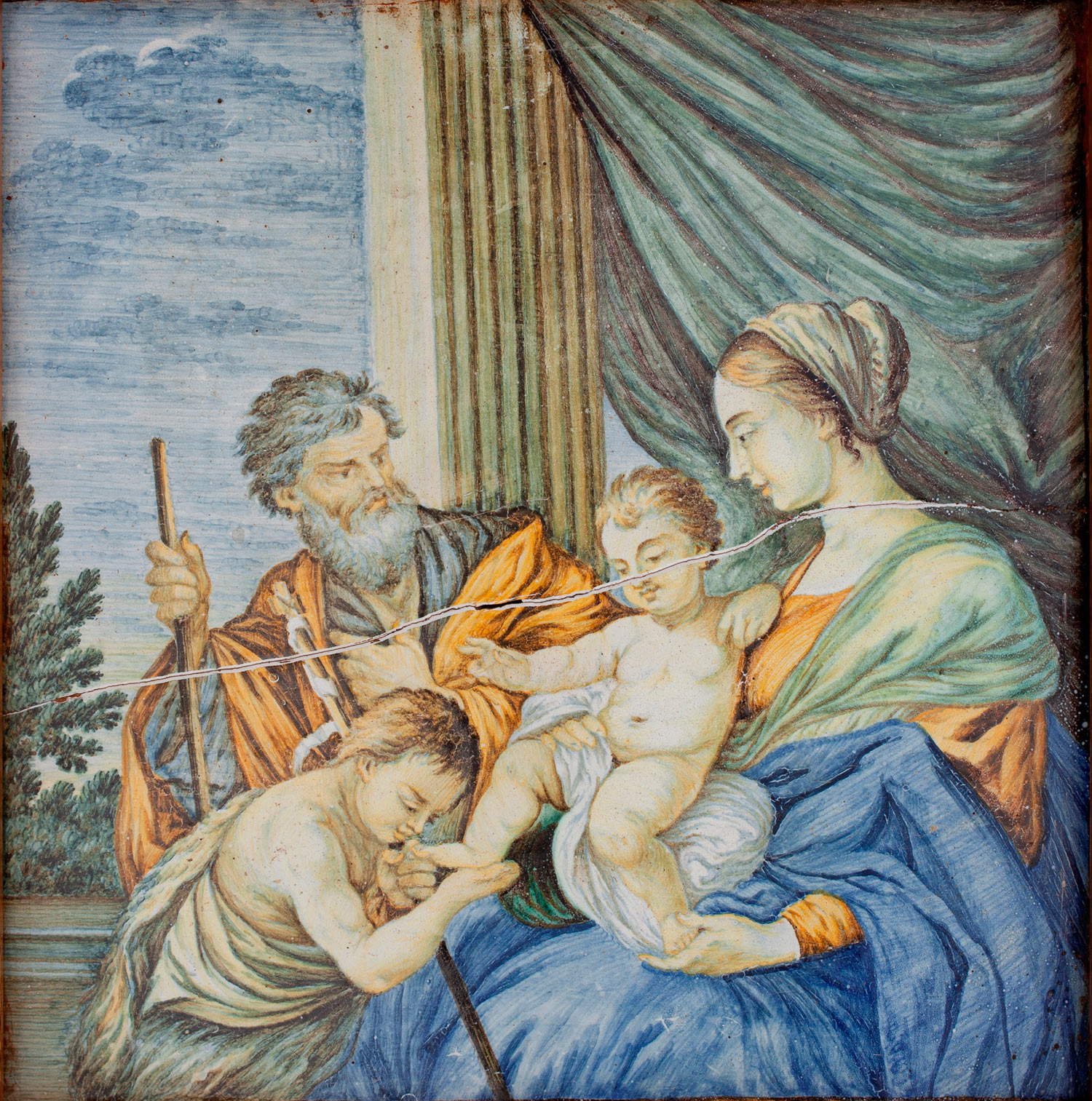
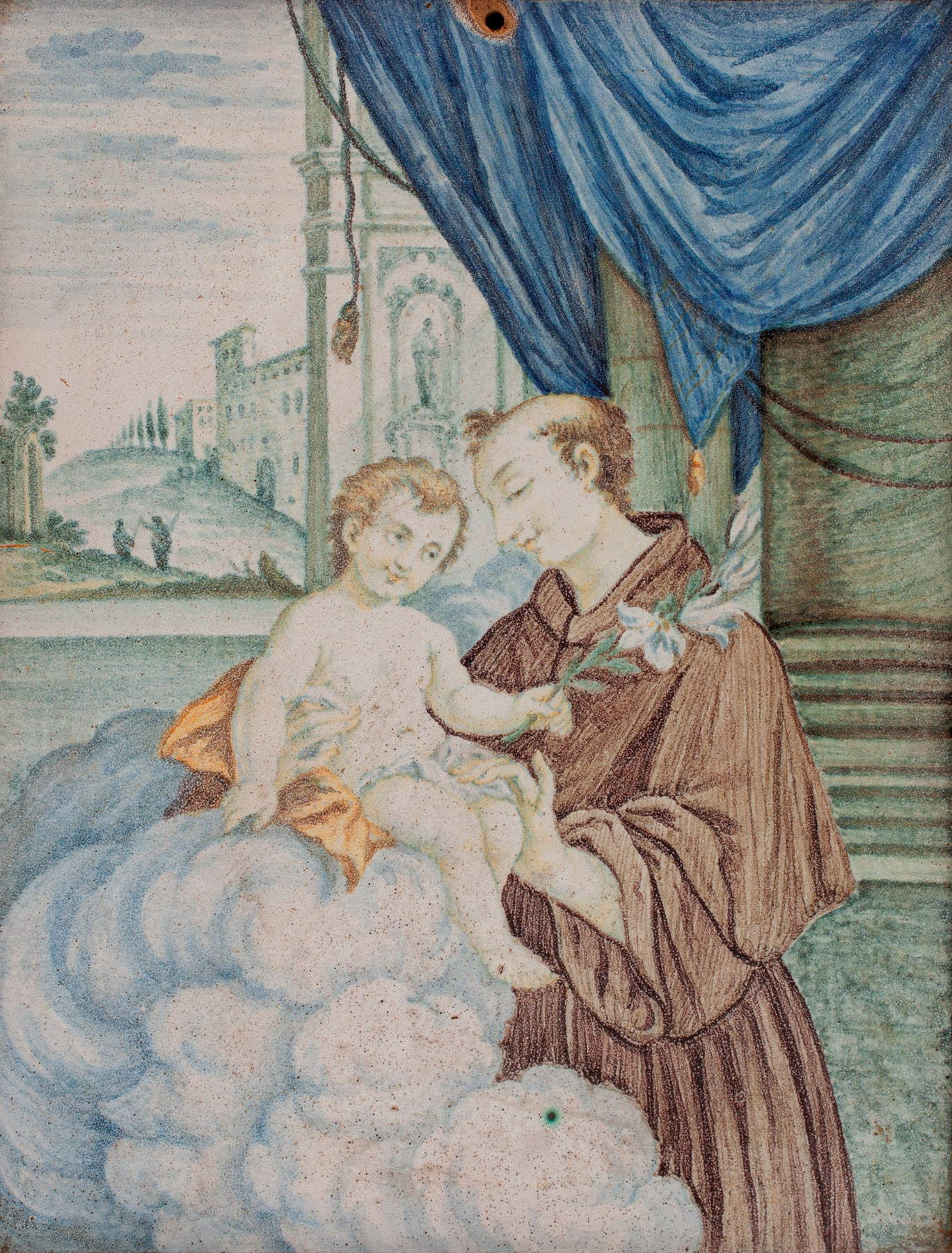
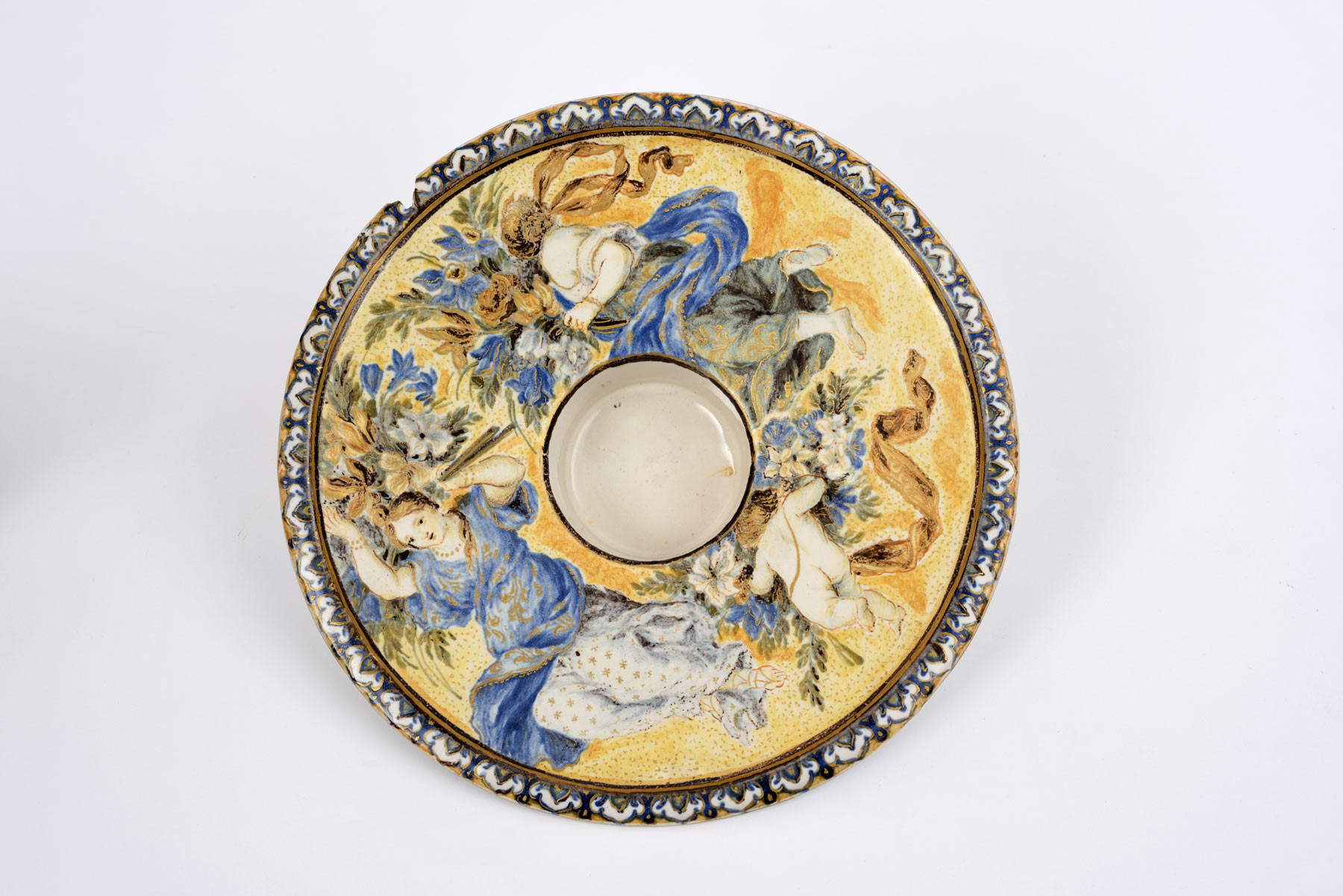
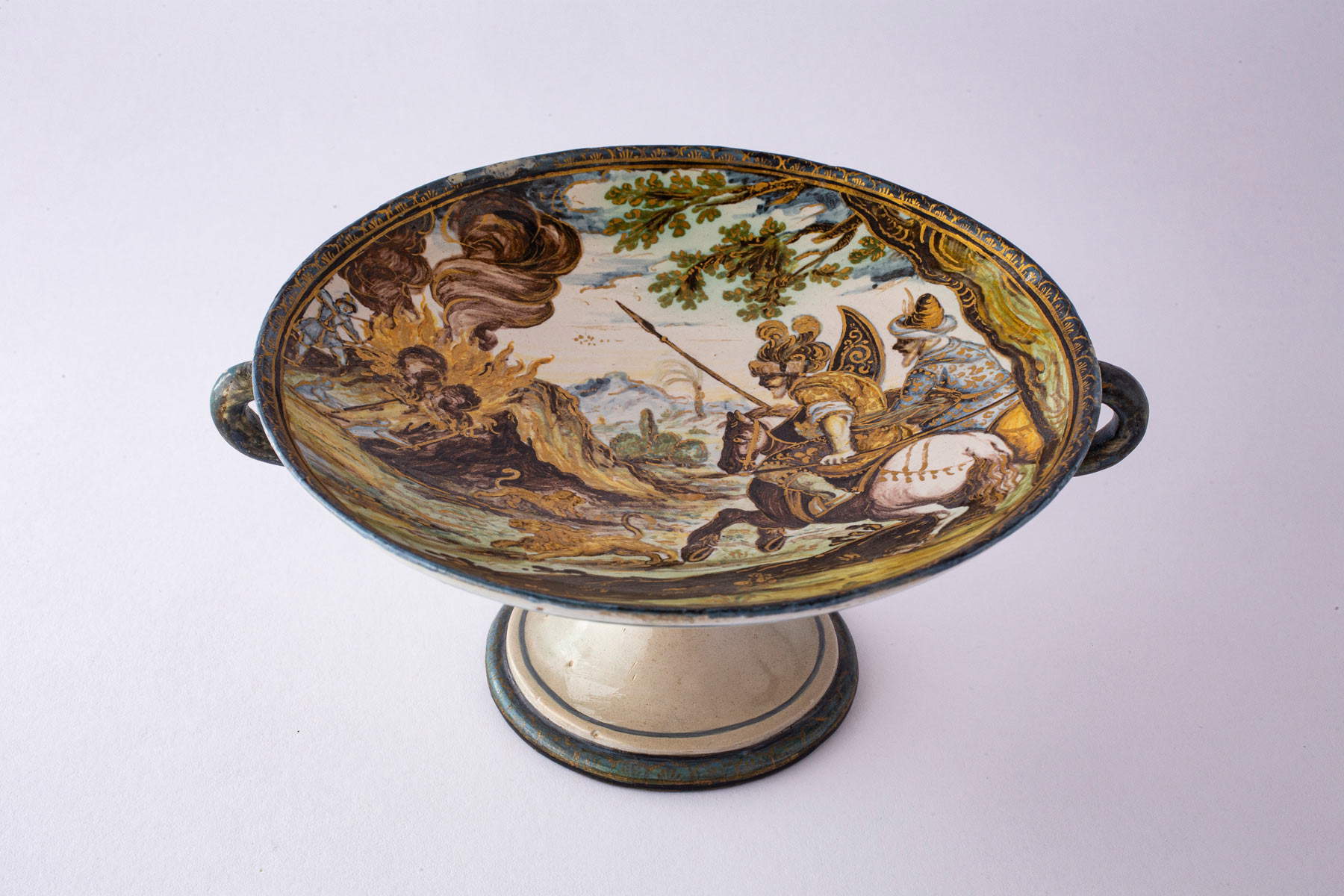
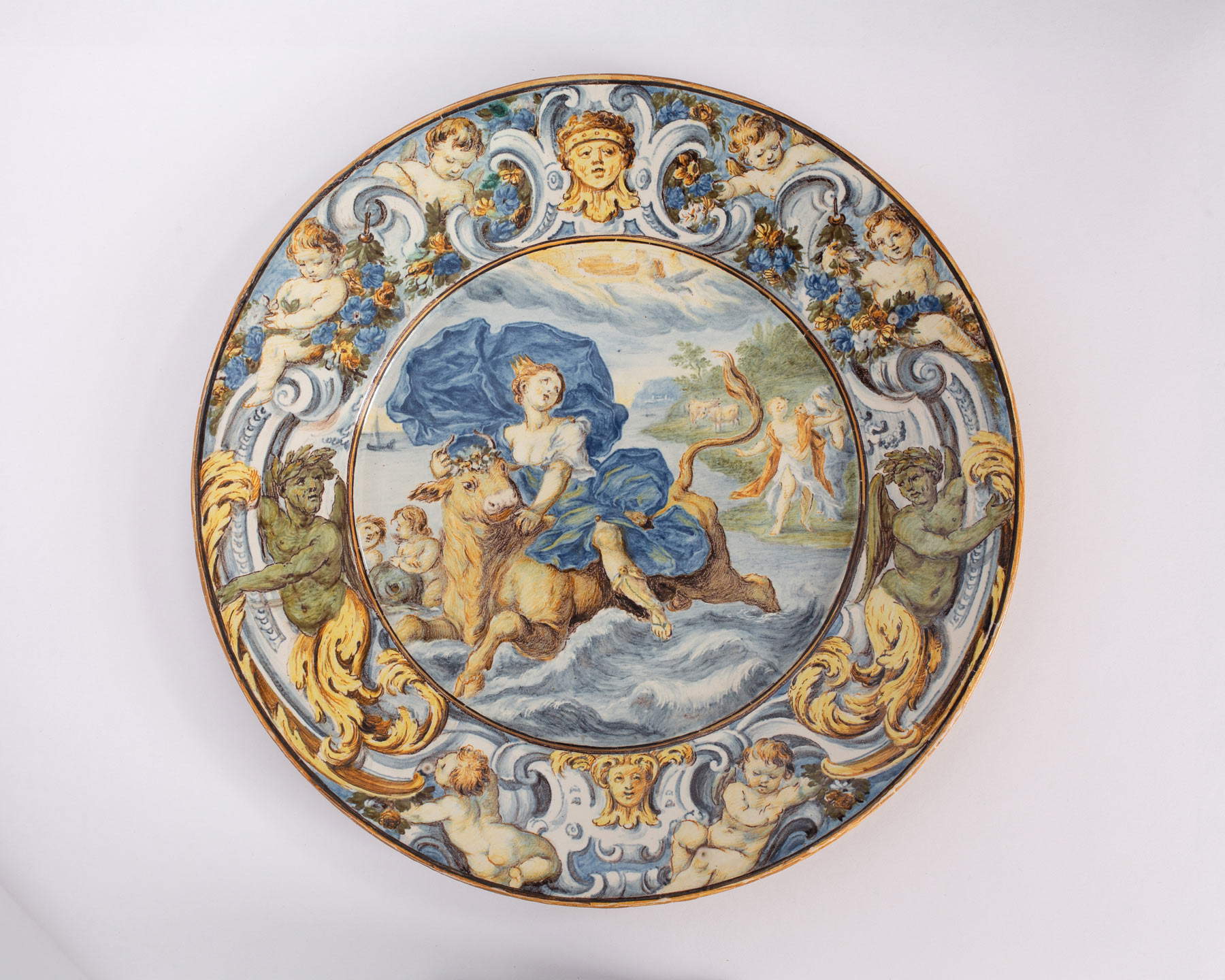
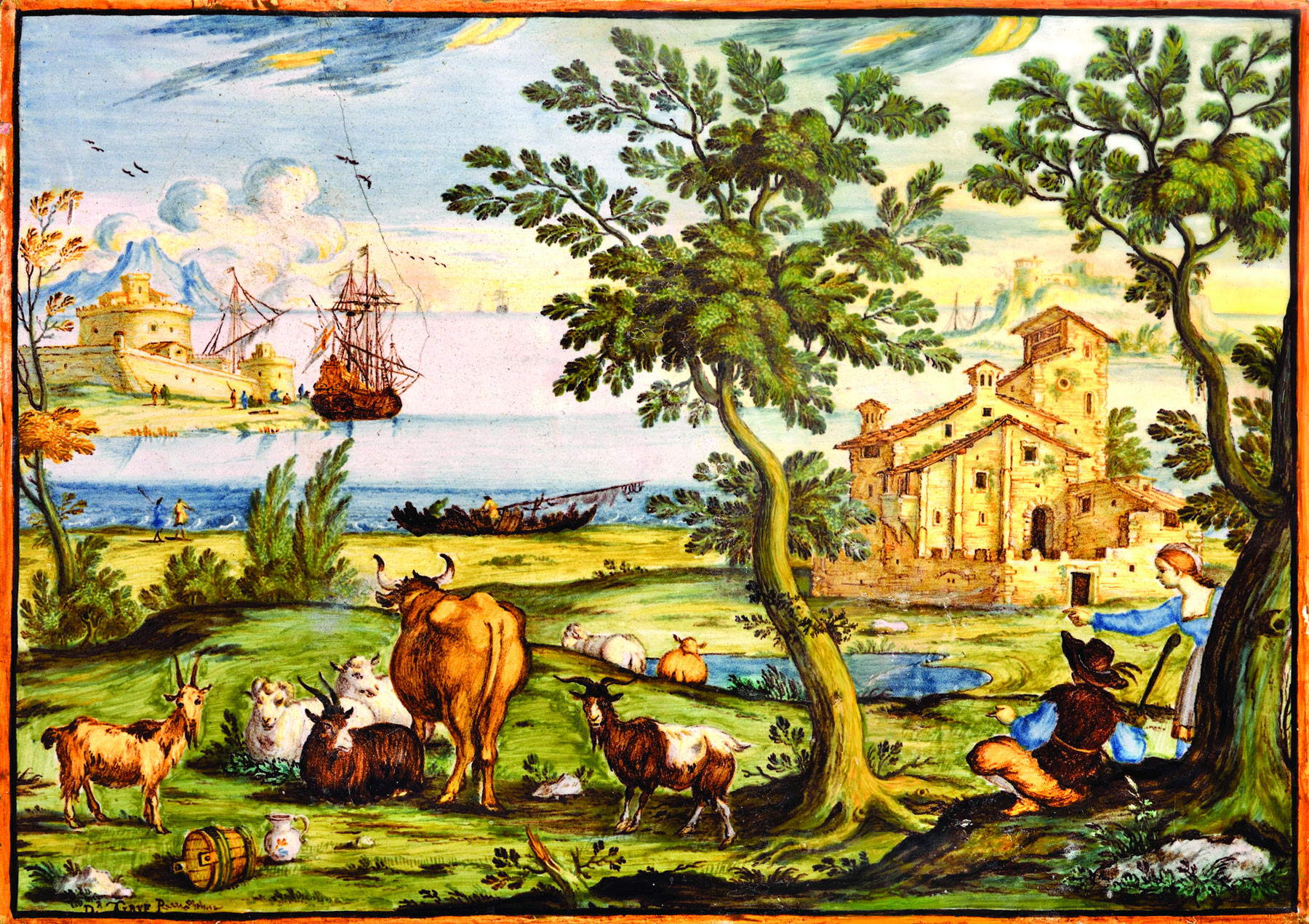
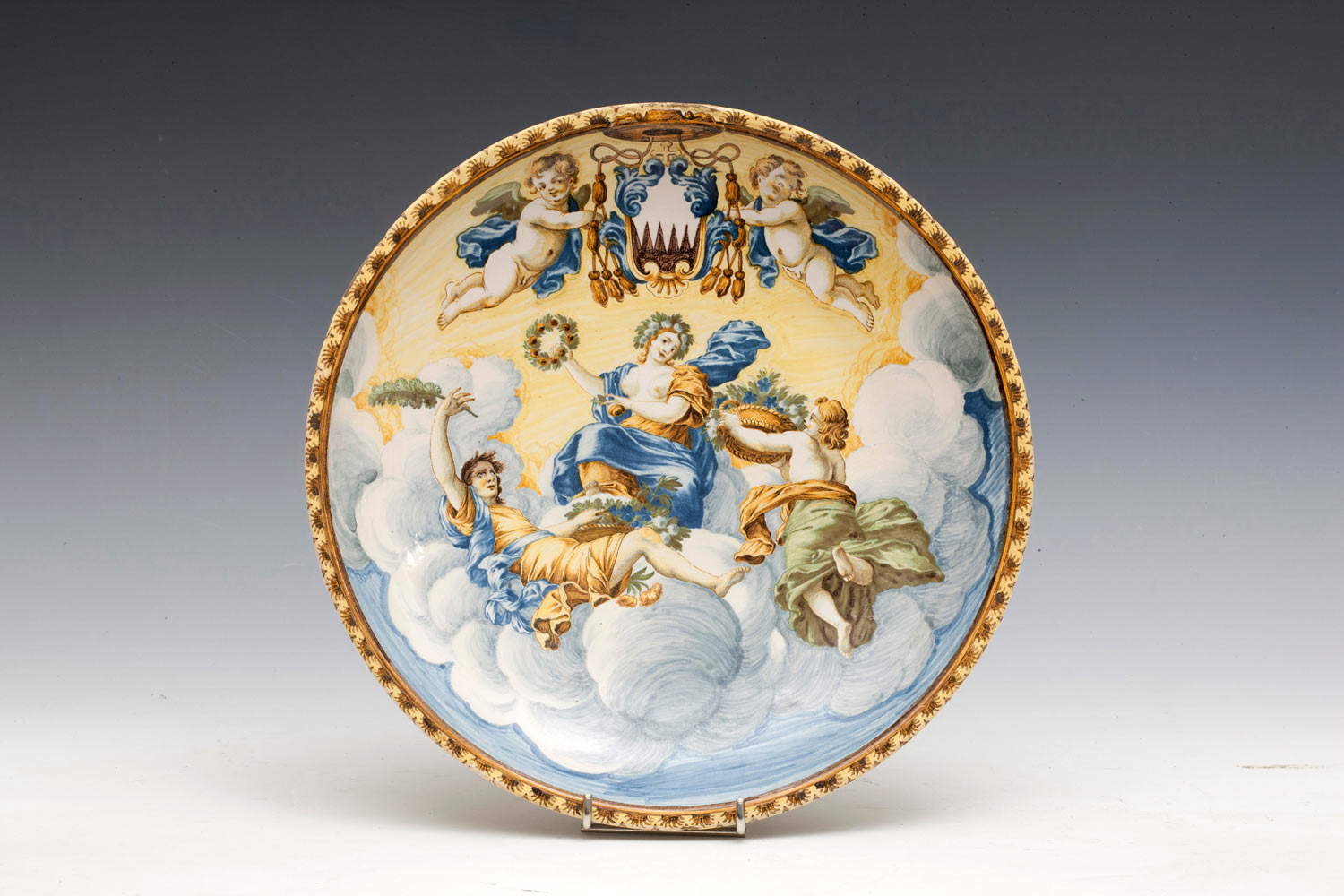
The exhibition
The exhibition at the Pinacoteca Civica di Teramo displays a fairly homogeneous ensemble in terms of period and quality that mostly chronicles the style and artistic expression of Abruzzo’s most influential family of majolica makers, the Grue family, and includes a devotional plaque depicting St.Anthony of Padua attributable to Liborio Grue, a Holy Family of Cortonesque inspiration attributable to Candeloro Cappelletti and a series of plates with Arcadian landscapes in the style of Nicola Grue the Younger, who belonged to a collateral branch of the family.
In addition, in order to better contextualize the importance and international notoriety acquired in the first decades of the 18th century by the artifacts made in Castelli, the exhibition will take advantage of the contribution of some works from the Matricardi collection of Ascoli Piceno, recently judged by Timothy Wilson as the most important private collection of Castellian majolica, which was presented in Teramo in 2012 on the occasion of an exhibition that was fundamental to the development of studies on the activity of Abruzzo potters. Municipally owned works will thus be flanked by plates and vases made by Carlo Antonio Grue, whose figure has taken on extraordinary relevance thanks to the studies of Fernando Filipponi in the context of the artistic activities promoted by Pope Clement XI and his sons Aurelio Anselmo and Liborio, with the ’intention of freeing from a condition of local phenomenon what was achieved by the Grue family, whose production, thanks to family ties with the Dukes of Acquaviva and the Albani family, is instead placed in a context open to the most up-to-date instances of European culture of classicist and Arcadian matrix that allowed the works that came out of their workshops to be contended by the most enlightened collectors of the 18th century.
In the exhibition this vocation to make majolica a first-rate artistic product is demonstrated by a series of precious artifacts destined for important personalities on the international political and cultural scene: this is the case of the four plates with Arcadian landscapes introducing Vetero and Neo Testament episodes placed in the background painted by Francesco Antonio Saverio Grue and enclosed, like the paintings on canvas, within refined 18th-century carved and gilded wooden frames that declare their provenance from the Savoy royal collections; they belonged in fact to a sophisticated admirer of Rococo art such as Umberto II. Also the series of admirable saucers painted with pastoral scenes attributed to Aurelio Anselmo and his brother Liborio Grue bearing the Testa-Piccolomini family coat of arms or the large plates with the heraldic insignia of Cardinal Ruffo show how in the eighteenth century the most important names of the aristocracy made use of what was painted in Castelli for the decoration of their homes.
Long ago, the original function of use for these precious objects had been lost and they were considered rarities to be displayed in cabinets de curiositès or hung on the walls of refined rooms to be appreciated by a host of select connoisseurs, now with the exhibition La fragile bellezza Istoriato castellano fra XVII e XVIII secolo (The Fragile Beauty Castellian Historials between the 17th and 18th centuries) we want to even more demonstrate how the skill of the Grue family’s artists had succeeded in the daring challenge of transforming a production technique born for the production of objects intended for domestic use into a true form of artistic expression.
The exhibition, with free admission, is open Tuesday through Sunday from 10 a.m. to 1 p.m. and 4 p.m. to 7 p.m. For information, visit the Teramo City Council website.
 |
| All the vibrant colors of Castelli ceramics on display at Teramo Art Gallery |
Warning: the translation into English of the original Italian article was created using automatic tools. We undertake to review all articles, but we do not guarantee the total absence of inaccuracies in the translation due to the program. You can find the original by clicking on the ITA button. If you find any mistake,please contact us.




























